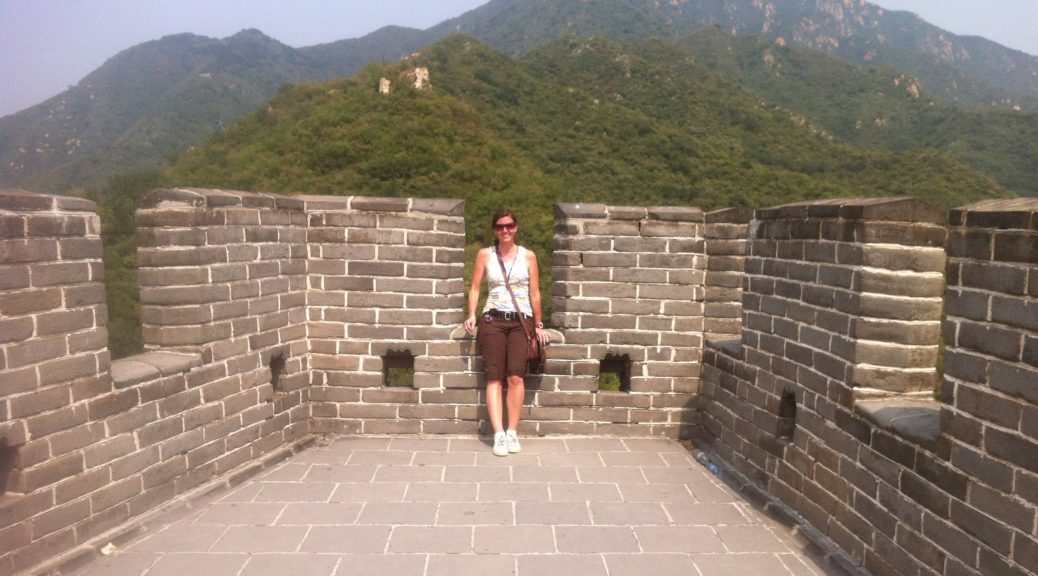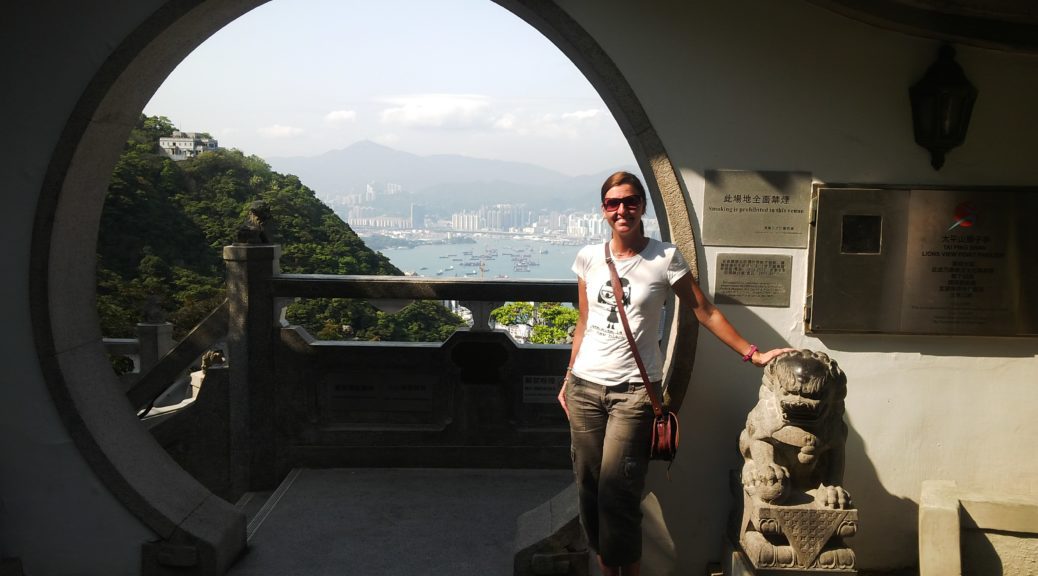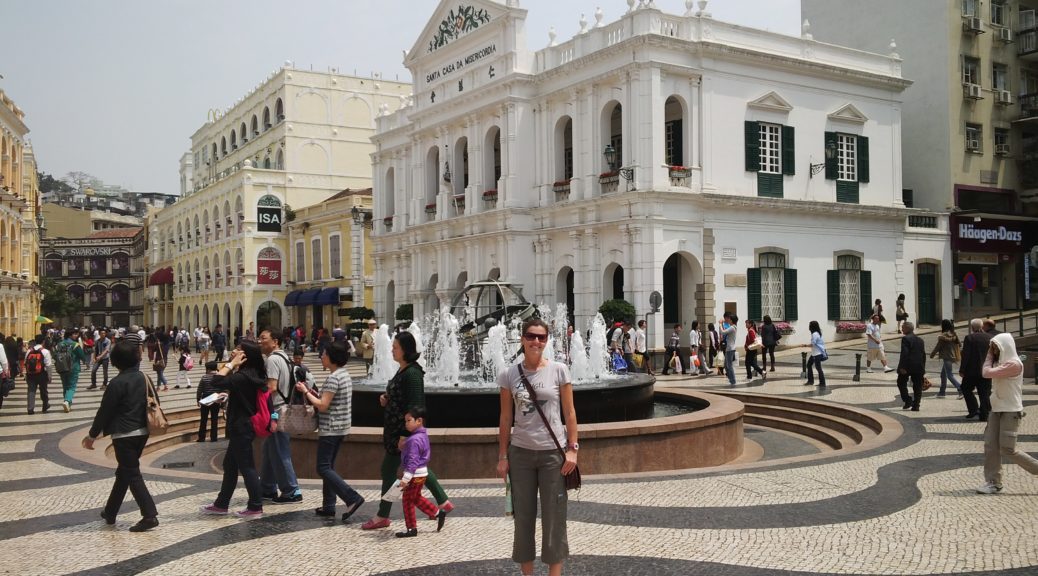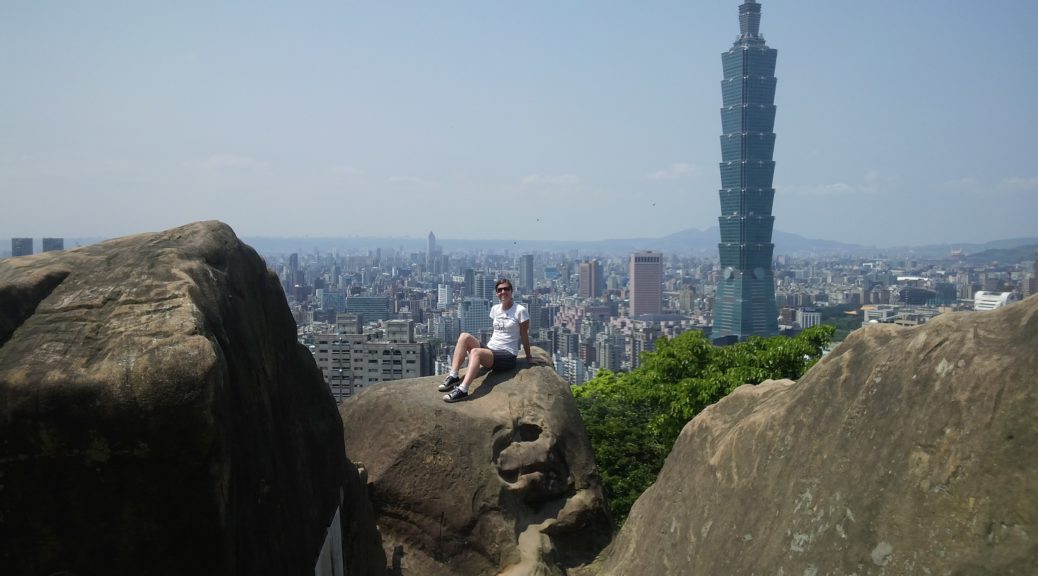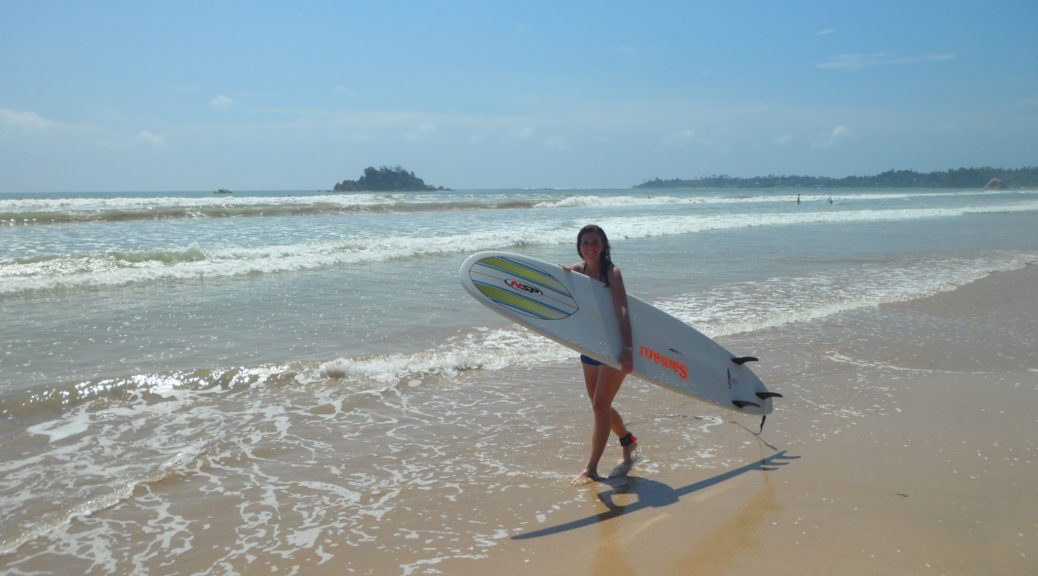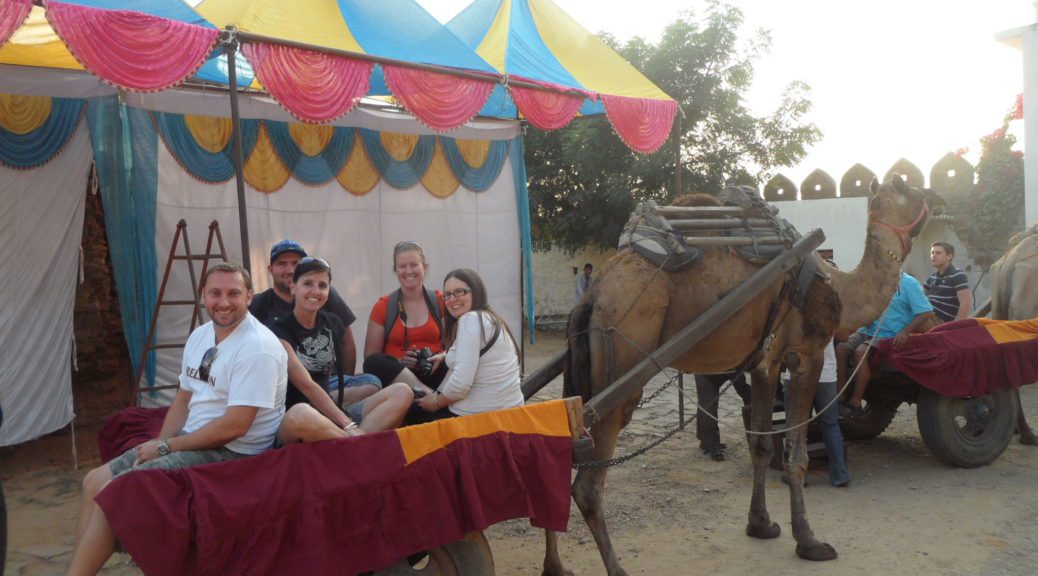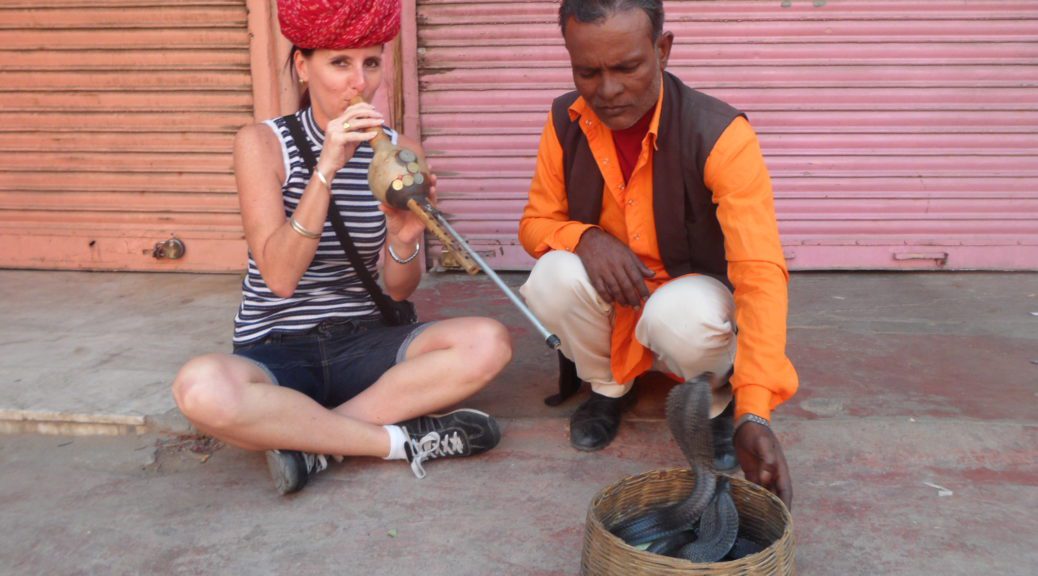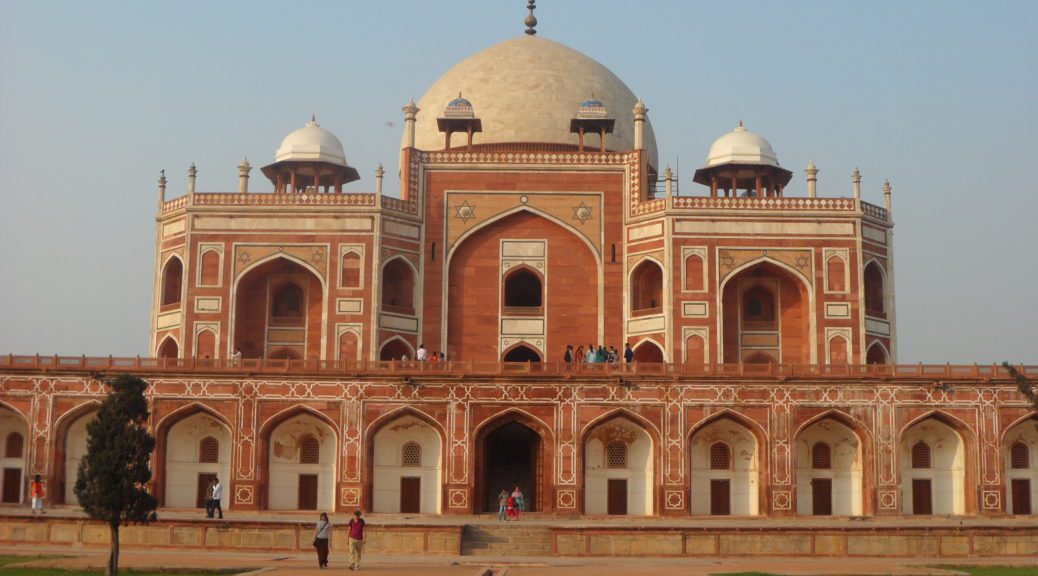BEIJING
21-24 August 2014
We were greeted, as planned, at the airport by our driver from Merry Travel, which was a relief since the last thing we needed after 2 long flights with a 4-hour transit in Dubai in between was to cause an international incident at PEK being lost and tired-grumpy. Risk averted, we met our first tour mates – a lovely Kiwi couple – and climbed into our very comfortable people-carrier, for the commute to who knows where.
First impression of China? It was hot. Very hot. And humid. Very very humid!
Traffic was (initially) not as bad as expected – it was much worse at home! The drive was prettier though, with willow-like trees lining the wide highways, and not a spot of litter anywhere in sight.
Although the driver said that our hotel was very close to the Beijing airport, apparently it was all relative since the city is 16,800 square km with 24 million people.
This – if we’d done our homework – should have come as no surprise. The enormity hasn’t sprung out of nowhere; Beijing had its first walled city from 11th to 7th century BC, has been a prominent city for millennia and has been the capital of China for almost 8 centuries. It was first on a site called Peking Man, and has only been called Beijing since 1919. The name Peking is Cantonese; Beijing is Mandarin.
We did experience patches of traffic (nothing unmanageable, especially since it was rush hour) and it was marginally more of a liability to us getting to the hotel than the driver’s commitment to driving at 60; likely a legal requirement seeing as we weren’t being overtaken. Eventually we pulled up at the Traders East Side hotel and checked in quickly and easily. The hotel was *very* nice, far exceeding our expectations!
Our 7th floor room was spacious with impeccable decor, twin beds with billowy soft white linen and a large new and lovely en-suite bathroom. The enormous bay window overlook the hotel gardens framed by a public walkway along a riverbank with the cityscape beyond.
The room didn’t hold our attention for long though and we were soon off to find out what our little slice of Beijing had to offer.
We got a city map from the concierge, which was daunting and confirmed that the enormity we’d felt from the car was a reality – what we’d seen was a tiny fraction of this massive city!
We decided to ditch the map and follow the concierge’s advice to walk through the gardens and onto the walkway (which we’d seen from our room) where we’d find activity around the corner.
We did. And kept ourselves entertained with blissfully light-concentration activities like wandering around supermarkets and eating delicious fried egg salad sandwiches rolled and wrapped in bacon (clearly not traditional Chinese fare, but we figured we’d get enough of that on the tour itself).
FRIDAY
Friday morning started early, with a 06h30 wake-up call. Not so bad when there’s a hotel breakfast up for grabs. And this one was complicated! All things to all people, there was a buffet corner for every taste; an omelette station, a stir fry station, a waffle and pancake station; a salad valley, with smoked chicken and duck; a cereal bar with unfathomable yoghurt flavours. So much choice! But beef sausages and turkey bacon, so not necessarily winning on all fronts.
We met our tour group in the foyer at 08h00: mainly Saffas, with 2 Kiwi couples and an Aussie bloke (who turned out to actually be a Frenchman living in Manley). Our tour guide, Mr Lee, took charge and turned out to be a helluva nice guy, who speaks a spot of Zulu from a stint working for the Ackerman family of Pick n Pay fame.
He shared his (fascinating) lifestory of being raised by his grandfather who died 2 months prior at 101 years old, having spent a life practicing Traditional Chinese Medicine, which he’d passed down to his many sons and couldn’t understand why this grandson insisted on as flaky a career-choice as being a tour guide… which must be quite demoralising since our Mr Lee had to study 4 years in university for the pleasure of qualifying to guide our tour! I suspect there must be much of this generation, like our Mr Lee, born after the population curbing policy so being only child brings more pressure to follow in the elders’ footsteps.
First stop was Tian’anmen Square; the largest square in the world at 44,000 square metres (880×500), which can host a million people at a time! We started at the Front City Gate (one of nine city gates) and admired the traditional Oriental pagoda with mosaic roof tiles that looks onto the Square.
We passed Chairman Mao’s Mauseleum, but were advised that the queues are too long to be practical for our tour – 2 hour queue for a 20 second viewing where you can’t even stop or take pictures! But there were enough pictures of the Chairman nonetheless, austere portraits though they may be (not a peace sign pose or duck pout in sight in any of them!), eg at Tian’anmen Gate, the building famed for being where Mao proclaimed the People’s Republic and which is most familiar from always being the backdrop on TV reports when there are happenings on the Square.
We took a few snaps of the Monument of Heroes (erected 1958) with the National History and National Revolution Museums in the background, and moved on.
… into the Forbidden City (or Gugong, as it’s known in Chinese), built from 1406-1421 for the Imperial Chinese power of 2 dynasties over 500 years of tumultuous history, spanning over 72 hectares surrounded by large walls and a wide moat. It housed the royal family only (the Emperor, his family and his concubines) and is gigantic – mostly out of necessity to house the huge families the Emperors had, which came with the territory of having anywhere from 35 to 1000 wives (depending on physical and economic capacity), all the children that came with that gaggle (the first son becomes the succeeding Emperor and his mother the current Empress) and housing many generations together at one time, eg the most well-known, the Ming Dynasty.
The dwelling is a legitimate city because it has all the self-containment and utilities of a city (in a labyrinth of courts, halls, gardens, rooms and allies) and, with 9,728 rooms, it would take 28 years to stay in each of them.
Unlike European palaces, Gugong links art and architecture in subtle forms based on philosophy, harmony and circles of power and influence. The layout of the entire complex and all of its buildings is strictly in accordance with the principles of feng shui – dictating which way things face, what should be next to and apart from what and with such things as lion and lionness statues as gatekeepers – with other more practical infrastructural strategies like the 15 layer city square floor to prevent attacks from enemies tunneling through from below. Equal parts superstition and caution; clearly the yin and yang way.
With only royalty, Generals, bureaucrats, concubines and eunuchs allowed inside – ruling all known civilisation – the goings-on in Gugong were a fascinating mystery to the common people. Now the City is a national heritage site marked for the public, but only to enjoy the gardens and admire the buildings, not for concerts or private events etc.
We couldn’t help but admire all the jade which, since it ostensibly wards off evil spirits, was used to make anything and everything. It is traditional to wear a jade bangle on left arm (because it’s close to the heart) and many women still wear them, apparently often sentimentally handed down from older generations. Crystal, however, symbolises loyalty and faithfulness; ironic since the Emperors placed huge crystals in their wives’ camps… while they were off philandering with their concubines!
All the walking had us very ready for our (optional) Hutong tour; optional because it wasn’t strictly mandatory… but hardly a choice after Mr Lee’s charming hard sell and bargain bundle package offer.
Hutong is a Mongolian word describing the narrow street and alleys (in some places only wide enough to walk one-wide) – or neighborhoods thereof – formed by rows of traditional courtyard residences. The name comes from the times of Kubla Khan (Ghenghis’s grandfather), who introduced the necessity of waterwells in the town. These waterwells were called Hutong in Mongolian language so these collections of houses adopted the name.
These Hutong housed the lower end of society in the very status-driven dynastic period, but today represent the true heart of Beijing. The areas are very intimate because most families live in the same place for 200 or 300 years. Even though the old houses are being renovated and renewed, the powers that be are trying to pull down the hutongs to replace them with practical and space-economical apartments – to the detriment of the residents since, while they own the houses they live in, all land belongs to the government so they can do what they want. The government thus pays for the house, but this is only enough money for the resident to move very far out of the inner city. What was about 2300 hutongs in Beijing now counts only about 220 left.
Our visit to the Hutong included a rickshaw ride through the narrow alleys and a lunch in a local home. Being our first official foray into local cuisine, we had no idea what to expect.
Our group was seated at 3 round tables: 2 in what looked like the main bedroom (the usual fittings – and family members – were, quite unsubtly, stashed behind a sheer curtain in the room) and our table in the living room entrance into the small house. Each seating was set with a small saucer and set of chopsticks as placekeepers and each table had a large lazy susan in the middle.
Soon after arrival, our host placed a large bowl of rice, a plate of mini drumsticks and a plate with green cylindrical stalky veg with chicken strips. While tasty, we were morbidly fascinated by the small lunch and tiny portions allowed by the saucer-sized servings.
Then the plate of beef with onions and peppers arrived. And the boiled spicy cabbage. And the celery with chicken. And the carrots and cabbage stalks. It was a multi-course feast!
We should have expected such good fortune seeing as the house was feng shui: A north house (facing south). This was traditionally so that the south house, which is coldest, is for the servants; the east side for boys and west for girls in accordance with yin yang (girls are yang). There are no bathrooms or showers in the house, requiring use of (particularly disturbing) ablution blocks (with all squat toilets and no cubicles or doors). No wonder that younger people prefer apartments!
The oldies from the Hutong take their pet birds in cages to the park for tai chi in the morning; back to the park in arvie for a game of mah jong, cards or Chinese chess. It’s a full life really (but must be bloody cold in Beijing’s gruelling winters).
But on with the show.
The Temple of Heaven is not a religious temple, but where Emperors went twice annually for rituals of prayer and sacrifice to ensure good harvest for the people and thus retain his mandate from heaven to be ruler of China. It was also constructed between 1406 and 1420, with architectural layout to represent spatially the relationship between Earth and Heaven, with the Emperors in between. The complex spans 274 hectares (a square mile) of park, which is 4x the size of the Forbidden City and 7x Tian’Anmen Square! It contains a palace for preparation and halls and altars for the sacrifice.
It also contains the Hall of Prayer for Good Harvests – a main symbol of Beijing, often on cover of tourist books. It is one of three buildings built in the Mingdang style – entirely of wood with no nails – but is the only existing example of this ancient architectural style. Built in 1420, the original hall was rectangular and used to worship heaven and earth. It was later rebuilt in 1545 into a round building topped by triple-eaved roof with glazed tiles symbolising heaven, earth and the mortal world. It was again reconstructed in 1751 to become the Hall of Prayer for Good Harvests, supported by 4 immense pillars representing the four Seasons and the twelve months of the year.
After 1939, the complex was converted into a public park, with several portraits and exhibits to show the traditions and rutuals.
It was in this courtyard that Mr Lee began our Tai Chi instruction. He explained that your Chi is your air and blood and showed us how to do a selection of the core movements, slowly and purposefully. I hadn’t the heart to tell him that my Dachshund has been doing it for years!
Cultural matters in order, it was time for a spot of commerce. We were taken to a silk factory where we were taken in “Chinglish” (what the locals call what we Westerners call “Engrish”) through the metamorphosis of moth-eggs-caterpillar-moth and what this means for silk production. With 1,300 metres of silk thread coming from a single cocoon, the biology lesson seemed a bit disrespectfully abridged!
We were also treated to a hands-on demo of how the silk thread is transformed into pillows and quilts and all the goodies that cover them. Really indulgent stuff! So soft and smooth and, well, silky.
Closing the day was a live theatre show of Kung Fu Panda, threading an unlikely story of 2 of the world’s most lovable panda bears and their journey to find the masters of Kung Fu, with some pretty impressive displays of fighting styles and traditional weapon (batons, nunchucks etc) control. The Kung Fu performers were all from the martial arts school which spawned legends like Jackie Chan and Jet Li, and a neon screen introduced each set of performers as they took the stage, including details of their qualifications and accolades.
Not usually our scene, but quite enjoyable nonetheless.
Last order of business at the end of a very long first day was a(nother) multi-course / lazy susan / tiny saucer / chopsticks feast, with the now seemingly customary bottle of Coke and 2 quarts of beer for the table to share. Pot of tea to start and finish, but not a whiff of dessert in sight. No wonder the Chinese are so skinny!
SATURDAY
Due to what would seem to be poor planning on the part of the tour organisers, the Great Wall excursion was planned for a Saturday… which we were told meant a particularly early start in order to cope with the weekend traffic of people leaving the city to visit their homes / family / friends in the countryside. You’d think they’d have factored that in and started the tour earlier in the week! No mind, we had an excellent sleep in our very comfy accommodation, a lush breakfast (with every Eastern and Western option imaginable) and Mr Lee rocking the mic in the bus and entertaining us with endless stories and facts.
Serendipitously, the “best jade factory in Beijing” was directly en route to our Great Wall excursion so we were able to stop off and have a gander… which we’d already learnt meant a tutorial, a tour and a per person salesperson shadow, ready to pounce at the slightest hint of interest. Again, we were told this was a government factory, which “guarantees the best quality at the best prices”. Delivered with enthusiasm, to a skeptical audience.
Getting to the Great Wall gathered a busload of excitement. One doesn’t need to know the ins and outs of the Wall’s history and function to know that something that can be seen from out of space is stellar up close and personal!
There are obviously many places from which you can access the Great Wall of China, but ours was everything I expected: entrance through a grand stone gate, up the stairs to the walkway atop the wall, and wall as far as the eye can see in either direction.
Being in a valley, we had to ascend the Wall. We opted for the right hand side as it seemed like an easier route. If it was easier, it certainly still wasn’t easy! The searing 30-something heat with the hectic humidity and the steep and uneven stone steps made for quite a mission indeed. So so worth it though. What a view! What an experience!
What was also nice was having bonded with our group from the first day and catching familiar faces along the route, sharing hints and tips on things to see and best photo opp spots. Lots of requests for photos with Chinese people, who were unashamedly fascinated with us Westerners and seemed to prioritise us over the historical masterpiece on which we were all standing!
We rationalised this as being because with 1,4 billion relatively homogenous-looking Chinese people, concentrated as 24 million in Beijing alone, and with almost all of the many tour busses even being Chinese people, perhaps the 21 of us were a bit fish out of water. We’d also been asked a few times where we’re from and the blank result of our responding “Johannesburg… South Africa… Africa?” indicates that either the language barrier is bigger than imagined, or possibly China is very much a land of Chinese focus.
Brick walls aside, it was really quite something to think that we’ve done something so momentous! Such a pity that so much of the Wall has been destroyed or removed (for people building using the materials to build their homes), but hopefully enough of the remains will be preserved for future generations to appreciate.
We’d built up a healthy appetite, so were very ready for… another lazy susan feast. The monotony of the repetitive meal format was staved (for most people anyway; one of the Kiwis had already resorted to making sandwiches at breakfast to eat for lunch on the bus!) by 3 things: the variation of the dishes served, the disbelief that all of these meals are included in our bargain package and the venues where the meals were served. This lunch was in an Enamel outlet shop.
Cloisonne enamelware originated in Beijing during the Yuan Dynasty and was typically called “Blue of Jingtai” as blue was the dominant colour used. The enamelware was only used for royal families and was a symbol of authority and status.
The enamel-inlayed jewellery and ornaments were very pretty and, of course this was a government factory, which guaranteed the best quality at the best prices…
Back to the tour, we visited the Olympic Green, laid out along a straight promenade (called the Olympic Axis), creating a natural path along which to discover the features and buildings on the parkland. We walked as far as the National Stadium (nicknamed the Bird’s Nest for its distinctive design) and the Beijing Aquatics Centre (a.k.a the Water Cube because of its facade constructed out of thousands of ultrathin plastic pillows, creating a distinct look resembling bubbles).
After a day of much walking, the last stop was quite welcome. We were treated to a relaxing footbath and reflexology (lecture and) session at the Chinese Traditional Medicine centre, where the ancient art was instructed and practiced.
The massage (executed by a student) was pleasant if not a bit pedestrian, but the real highlight turned out to be a “free” consultation with a TCM Doctor. There was lots of diagnosis of high blood pressure and cholesterol, with indecipherable prescriptions written in Chinese, and all the medicines – conveniently for the doctor – coincidentally coming at a 700 Yuan (ZAR 1050) pricetag for a 30 day course… but, naturally, a course is more effective if followed for at least 90 days.
Mom was prescribed 3 different meds, promising to cure everything from swollen legs (thanks to the heat and the Great Wall walk, no doubt) to sleep issues (that would be the just-before-bed coffee) to weightloss (no prizes for guessing this one). I was given a clean bill of health (probably because the doctor spotted my pedometer). Needless to say, we walked out with nothing.
Next event was the acrobats show. Wow! What those people can do with hoops (varying heights, tumbling and backflipping through), umbrellas (whizzing and balancing on toes), bicycles (sit, stand, headstand, grandstand, human pyramid) and the simple human body (crazy contortionist who could lie on her chest on the ground and have her legs run full circles around her head)! Sheesh – what a show!
There was much excitement for the last event of the day – Peking duck dinner!
Mr Lee shuttled us off to a very authentic-looking place (ie there was no English anywhere), and we were soon seated and sipping on a tasty chicken broth. Several courses later, the star of the evening arrived – a golden brown crispy duck that had been spatchcocked and neatly sliced into many delicate slices. The hostess came to the table and demonstrated how to prepare little pancake parcels of duck with sprouts and cucumber and a brown condiment sauce of sorts.
The evening closed with… dessert! Watermelon. What an anti-climax! Although, it could have been worse – in winter the dessert is cucumber!
SUNDAY
The highlight of the tour (for me anyway) was the first agenda item on Sunday morning, the outing to Beijing Zoo to visit the panda bears!
It had rained overnight, so the sky was clear and (uncharacteristically) blue. You don’t realise how subliminally the perpetually smoggy greyness dampens spirits… until it lifts, taking the atmosphere on the bus with it!
Mr Lee gave us a precis on panda bears and their habits, preparing us for the zoo visit. Slothly creatures, they are very antisocial and spend on average 14 hours a day hunting bamboo (not a very energetic exercise since it’s everywhere) and eating it… and the rest sleeping. They have no interest in company nor altering their routine. Apparently there can be some sparring of potential suitors at mating time, but even that seems to be a largely could-take-it-or-leave it affair.
Even though the panda bears are found in the wild in Sichuan – suited because of its rainy climate which provides an abundance of bamboo – the Beijing Zoo is world famous for its collection of panda bears and efforts in preservation. The animals are a species of national pride for the Chinese and, while they are happy to ship off pandas to (qualifying) zoos around the world, it is on the understanding that they are on loan, still belong to China and can be recalled at any time.
The main panda enclosure has 5 adult bears and we were very lucky that all of them happened to be awake at the same time, so we saw all of them! No mean feat since, clearly, they don’t fret about early rising and we’d caught their “morning rush” (all were sitting or lying flat on their back and slowly shoveling bamboo into their mouth) before naptime and a busy afternoon of doing more nothing.
Big beautiful creatures and a wonderment to see them in real-life!
The panda experience overshadowed the ensuing pearl factory visit somewhat. Following the same routine as the other manufacturer tours, we started with an introductory talk, from a very charming hostess called Michelle. I commented to her afterwards on the punny appropriateness of her name and it turned out to be less than coincidence as she’d chosen her English name (lending from a model on a poster on the wall of the store) when she got her job there.
Michelle told us all we needed to know about the 4 colours pearls come in (white, lavender, gold and black) and where what can be found (seawater vs freshwater). It was a very interactive show-and-tell, including the most useful bit – telling real from fakes by rubbing them together and assessing the white residue.
We bought a few obligatory real sale bargains… but nothing compared to our tourmate, Rosemarie, who was a bit of a pearl fiend – already draped in 2 enormous pearl necklaces clasping a large pearl pendant with a pearl brooch the size of my palm to match, 3 or 4 pearl bracelets and 2 large pearl rings. She, of course, had gone big and bought for herself and her giftlist.
Pooped already, it was good to have a chilled traditional Tea Ceremony next. With over 4,000 years of tea drinking, the Chinese have finessed this to a fine art and our hostess did a great job of explaining everything to us.
Tea-making is an exact science that requires not only the right pot (since all tea is made from leaves, not bags) but also the right temperature water, so as to maximise the expressing of the tea from the leaves. To measure the water temperature they use an ingenious little ceramic model called a Pee Boy because the water comes out as a jet – as if the boy is peeing – if it is the right temperature; if not, it doesn’t come out at all.
She expertly scooped, boiled, swirled and poured us a few flavours to try, starting with Jasmine tea which is known as a morning or work tea. The leaves have so much flavour that you can use them up to 4 times over 24 hours.
Next was Oolong tea, which is also known as dragon tea, since it is said to hold the power of the dragon. This tea is served in little cups with a black dragon on the outside. As the hot tea was poured into the cups, the dragon turned red. Oolong is supposed to be slurped, allowing the air taken in with the sip to unlock the flavour of the tea. Oolong is said to be good for circulation, metabolism and iron. But probably not good for your popularity, if slurping away in the open plan at the office.
We also tried Puer tea, which is the national tea in China, as well as the fruit tea which can be served hot or cold.
All tea is supposed to aid digestion, so it is served before and after meals. The tea awaiting us at the table when we got to lunch was nowhere near as fancy as the tea house’s offering though.
The group all knew each other quite well by now, so there was much excited exchanging of stories from the morning’s experiences – and strategies for the afternoon’s excursion… shopping in Silk Alley.
China had an indelible reputation for big brand shopping, which constitutes a combination of products liberated from the factories (originals swiped by workers), factory rejects, copies (fakes) and downright rip-offs. The secret is being able to tell the difference between them!
Mr Lee has lost credibility on guaranteeing us the “best deals” from our inkling suspicion that perhaps the dealers might be chosen per kickback! He was an excellent showman though and spun a good yarn about getting us on the inside of the (very) limited access “red button” backroom in the top shops in Silk Alley to buy electronics, jewellery, leatherware, accessories, luggage, you name it!
Our experience in the red button room was short-lived, thanks to my salesperson getting unwarrantedly hysterical and pushing my buttons (red and otherwise) within a minute of our arrival. Being as spoilt for choice as the 7 floors of shops (peddling the same merch) allowed, my capacity for the banshee was exactly zero, and we were soon on our own mission and haggling and bargaining up a storm! … and managed to secure an excellent deal on the genuine leather (Chinese brand) luggage set we’d spotted in our hotel shop and been hankering after.
The bargaining for the luggage had been a long and tedious process, leaving little time for other shopping in Silk Alley, which worked out in our favour as the next stop was also a shopping excursion at another multi-storey factory outlet mall. The second mall was cheaper than Silk Alley presumably because it was a more informal so avoided the fixed costs associated with the formal shop set-up.
We had a whale of a time in the factory outlet! Surprisingly, Mother bought very little, but I more than made up for that and, never being ones to give up, we passed on the return journey to the hotel, opting instead to stay and shop. We made plans with some of our friends to meet at 5, then again at 6 when we still had a full floor to go, and ended up leaving closer to 7, having exhausted the will to shop and committed to the idea of foraging for dinner.
In an effort to keep it simple, we broke convention and had a not-very-traditional McDonald’s, but it was made ever more complicated by a ridiculous out of stock of bacon, lettuce and chicken situation. Double cheeseburger meals were fine though and gave our slimmed-down little group of 5 a chance to roundtable on the day’s achievements and the evening’s plan.
We decided to walk back along the main road we’d come along on in the bus to try and find the famous gigantic TV screen. Relying on memory, we thought it to be only a few blocks away. When we were a few more than a few blocks away, we realised we must be on the wrong track. We managed to flag down a cab (not mean feat on the very wide roads with fast-moving traffic), but the car would only take 4 people, so we sent Mother with Rosemarie and Johan, leaving Nelson and I to see the rest of the city on foot with a good walk back to the hotel.
It took a good hour or so, and pushed it to an 18,000+ step day, more even than the Great Wall day which was only 16,000! Slept like a baby after all that!
And then it was off to Suzhou.
